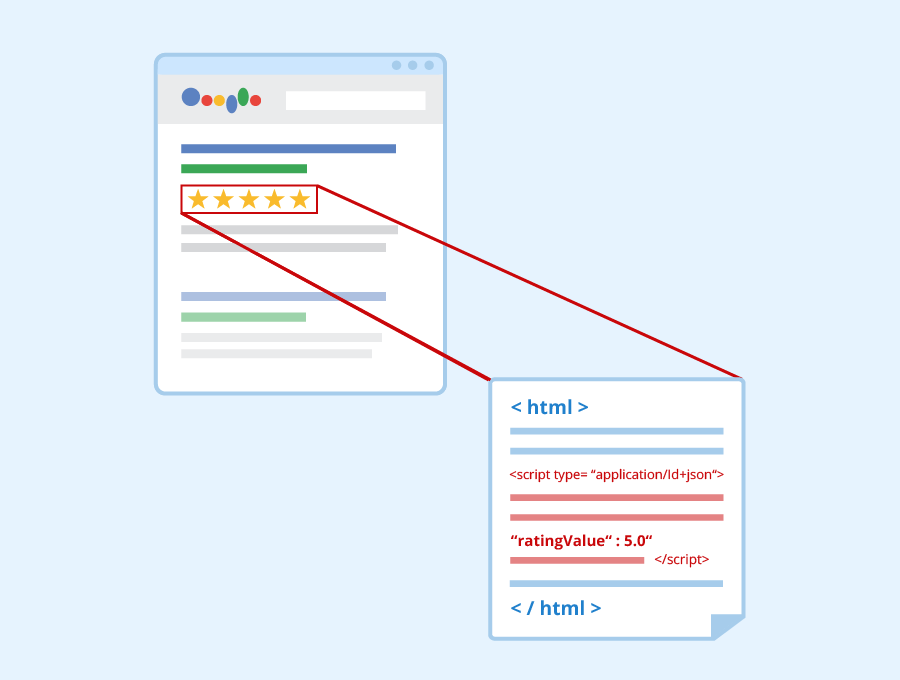
Schema markups are a type of microdata that assists Search Engines such as Google and Yahoo! to structure the data of the websites into simpler categories and present the contents more comprehensively on the SERPs. The result of the SERP is the rich snippet that has been identified from the content of the query put into the search engine. The question might arise now that, how can these schema markups be implemented? Or, where can these markups be implemented? The answer is that they can be implemented in most types of websites such as those for a variety of businesses as well as individual, personal, personal brand sites.
The better the data structured for the website, the easier it will be for the viewer to understand, if the results match their requirements which will then lead to a click through to that website. Hence, the goal of these Schema Markups is to increase the Click-Through Rates (CTRs) to a certain website. However, the reality is that, even though these Schema Markups are an essential part of optimizing your search results, according to ACM Queue, less than one-third of Google’s search results utilize Schema Markups. This gives the present website owners plenty of fields to capitalize on different types of schema markups for better-optimized results.
For this post, we will be looking at two of the most commonly seen schema markups- Site Navigation Schema Markups and FAQ Markups. These are seen very often on the Search Engine Results Pages (SERPs)and are one of the most noticeable structures that attract the attention of the users because of the way they appear, which is significantly different from the links of other websites that can be found in more of a listicle format.
SITE NAVIGATION SCHEMA MARKUP
What is a Site Navigation Schema Markup?
The site navigation schema markup allows the search engine to scale your website and understand how it can be navigated and how it is organized. It helps the algorithm to understand the structure of the website in order to present it better in a more comprehensive format through separate links to different pages within the website. The advantage is that it allows your audience to get an idea of how the website has been structured and would lead them directly to the page they need instead of opening the home page and navigating from there. This format can therefore be used to influence organic sitelinks.
How to implement the Site Navigation Schema Markup on your site
A site navigation schema markup can be implemented on a website by including an itemized list of all the intellectual elements that are present within the website- this includes, audio, visual, and text. The Schema Markups can be inputted by using the Google Tag Manager to create the custom HTML code or by using the Google Structured Data Markup Helper. Since site links are completely automated by Google, it will only display the sites that are most important to the users. For example, in the case of Ideal Barn Doors, it displays the most searched for subpages or pages that were visited the most on that website. Therefore, it will only display the pages most useful to search results based on previous queries for the website.
An example of this type of schema markup
Here is an example of a site navigation schema markup. For our client Ideal Barn Doors, the number one service provider for barn doors, the Google search result shows the breakdown of the different web pages that can be found on their website. The site navigation schema markup lists all the most commonly searched subpages for the website Ideal Barn Doors users can then directly click on the required page if they want to look at all the products, or only the special or if they need to contact someone from the team. This allows the users to take a shorter route and contribute to organic click-throughs to the website as opposed to having to work through the menu of the website.

FAQ SCHEMA MARKUP
What is an FAQ Schema Markup?
The FAQ Schema Markup is another very commonly seen list on the SERP related to a certain query posted in the search box. The FAQ Schema Markup appears as a list of collapsible questions that have been offered by the page itself. When one of the tabs under the list is clicked, the answers about the product or service appear. Moreover, this also helps you to be eligible for answers to questions that are asked to the Google AI, or Google Assistant.
Now, since a schema markup is useful for informing the Google algorithm what the content on a website means, the FAQ Schema is more specific by also adding information that the page answers to a certain set of commonly asked questions. This is quite helpful since it increases the visibility and authority of the website when compared to other websites which do not have any Schema Markups. It brings in organic traffic and increases Click Through Rates (CTRs) and conversion rates, which is an important metric to judge the effectiveness of the SEO of the page.
How to implement FAQ Schema Markups on your site
The implementation of the FAQ can be done similarly by the Google Tag Manager or the Google Structured Data Markup helper. However, the valid usage of the FAQ schema is when the answers are provided by the website itself about the product or service itself or related queries, that have in no way been answered by the users.

An Example of FAQ Schema Markup
Consider the following example of another one of our clients, Eastcoast Sailing. When a search query for Eastcoast Sailing is made into the search box, all related queries or commonly asked questions related to the topic appear as a list. When clicked on a question, a website offers the answer. Therefore, as it can be seen, even if the query was related to East Coast Sailing, answers from other websites such as boatbookings.com also appear. When these answers help the users with their queries, they earn a clickthrough to their website. This is the organic traffic that tells the algorithm that the most appropriate answer to the question is provided by this one website, which increases its authority and visibility.

In the past, SEO Sydney worked with Eastcoast Sailing to improve User Experience and User Interface. The strategy that was followed was to centralize access to the content and the links to the website which led to an increase in organic traffic as well. These content pieces included specifically the answers to the most commonly searched question about east coast sailing and the company as well. The Schema markups were implemented to improve the results on the SERPs, which included FAQ Schema Markups by answering commonly asked questions about sailing, traveling, and their products and services and also Event Schema Markups to list all the events that tourists can attend while enjoying the services of Eastcoast Sailing. The results showed that there was an increase in booking inquiry completions by 50.79% in November 2020, as compared to November 2019.

TO WRAP UP, schema markups are important for a website to make it more noticeable and increase the authority making their results more reliable. This pushes up the rankings of the page as well helps earn more clickthroughs and organic traffic. Moreover, according to Neil Patel, FAQ schemas are ever more important because they have not been utilized to their full potential yet. Out of 10,000 websites, only 17 had implemented FAQ Schemas in their websites. Another issue that needs to be kept in mind is that even after implementing code, they must be validated by the Google Structured Data Testing Tool to ensure no errors were made while making the data set.
Schema Markups are very important to SEO and pushing the rankings up on the SERPs. Watch the video for more information on the topic. Check out SEO Company Melbourne for further assistance on schema markups, as well as any great SEO-related resources.


